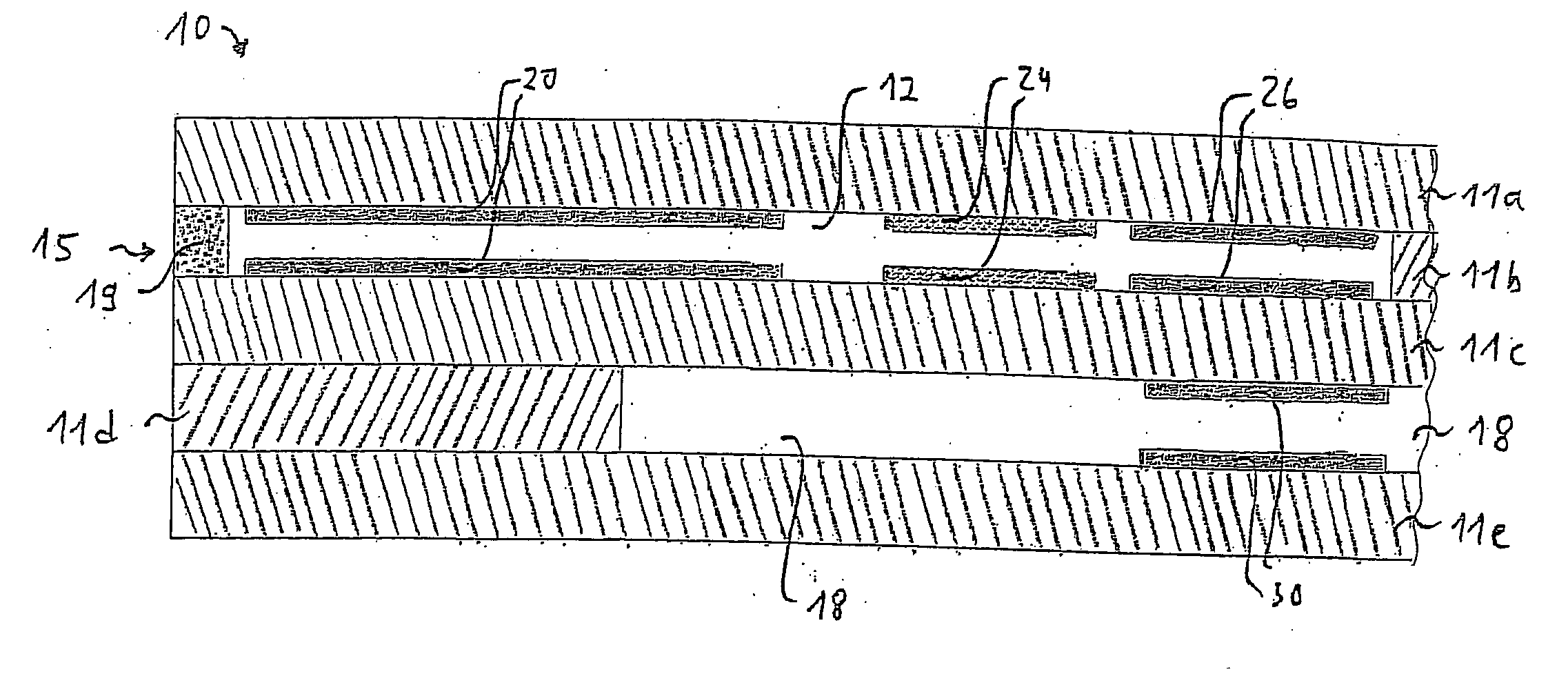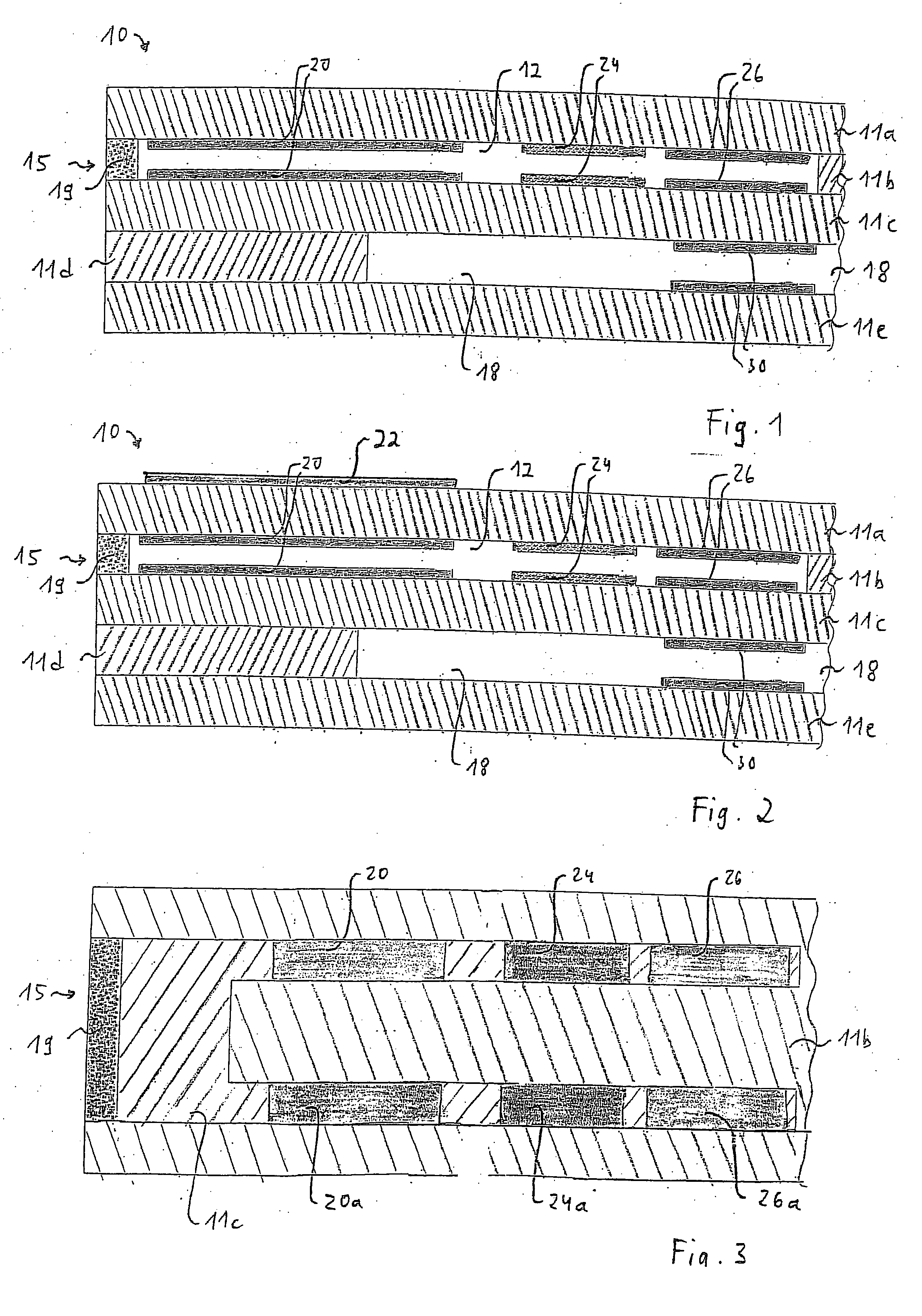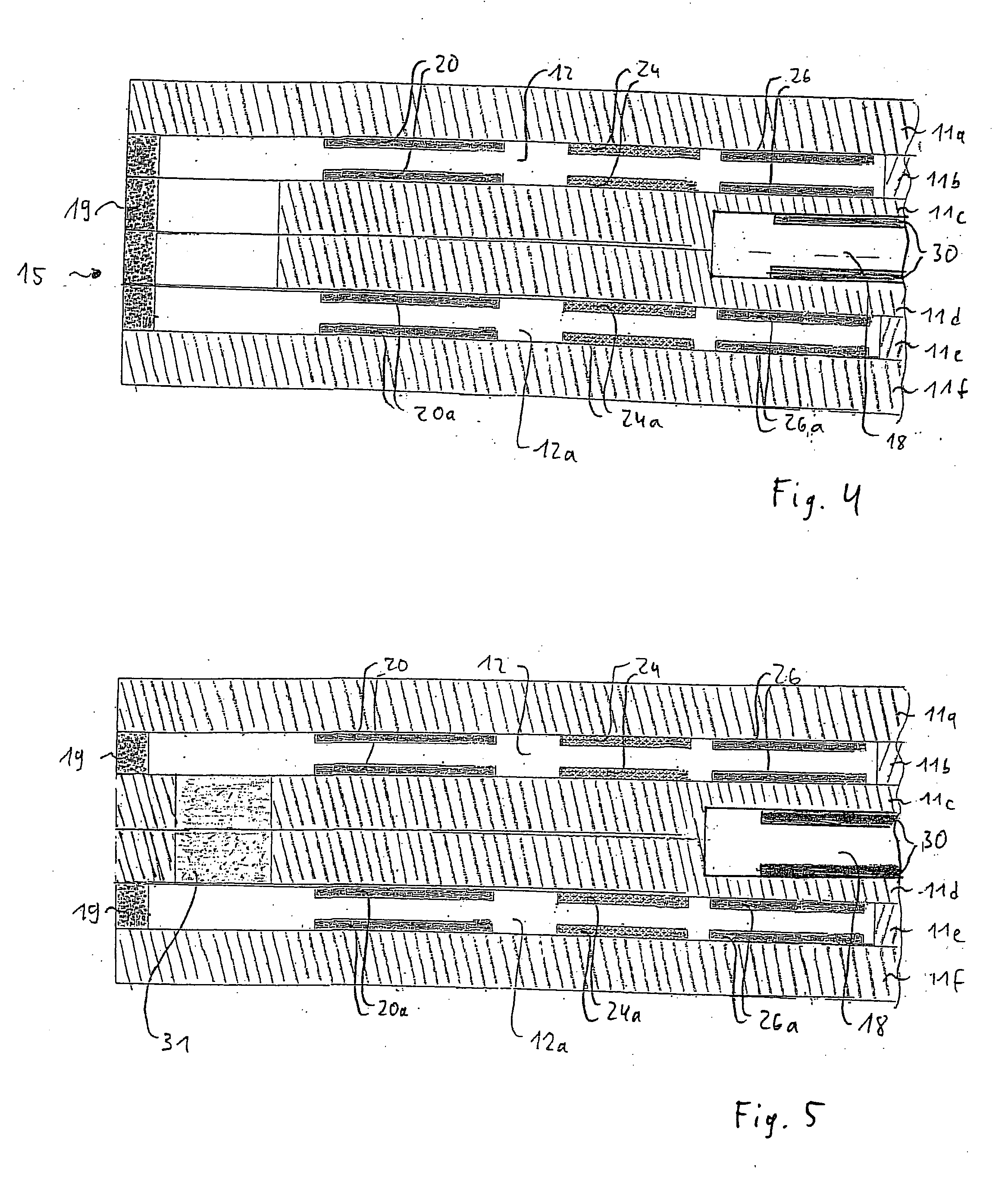Sensor element and method for determining ammonia
a technology of ammonia and sensor elements, applied in the direction of instruments, liquid/fluent solid measurements, electrochemical variables of materials, etc., can solve the problems of limited sensor determining of oxygen and nitrogen oxide concentration, and achieve the effect of simple sensor layout and high measuring accuracy
- Summary
- Abstract
- Description
- Claims
- Application Information
AI Technical Summary
Benefits of technology
Problems solved by technology
Method used
Image
Examples
Embodiment Construction
[0015]FIG. 1 shows a schematic of the structure of a first specific embodiment according to the present invention. Reference numeral 10 designates a planar sensor element of an electrochemical gas sensor, which is used for determining ammonia and, optionally, a further component of a gas mixture, which may be in exhaust gases of combustion engines. The sensor element has a plurality of oxygen-ion-conducting, solid-electrolyte layers 11a, 11b, 11c, 11d, and 11e, which are designed, for example, as ceramic foils and form a planar ceramic body. They are made of a solid-electrolyte material that conducts oxygen ions, such as ZrO2 stabilized or partially stabilized with Y2O3.
[0016] The integrated form of the planar ceramic body of sensor element 10 is produced in a manner known per se, by laminating together the ceramic foils printed over with functional layers and subsequently sintering the laminated structure.
[0017] Sensor element 10 contains, for example, an inner gas compartment 12...
PUM
| Property | Measurement | Unit |
|---|---|---|
| operating temperature | aaaaa | aaaaa |
| concentration | aaaaa | aaaaa |
| time | aaaaa | aaaaa |
Abstract
Description
Claims
Application Information
 Login to View More
Login to View More - R&D
- Intellectual Property
- Life Sciences
- Materials
- Tech Scout
- Unparalleled Data Quality
- Higher Quality Content
- 60% Fewer Hallucinations
Browse by: Latest US Patents, China's latest patents, Technical Efficacy Thesaurus, Application Domain, Technology Topic, Popular Technical Reports.
© 2025 PatSnap. All rights reserved.Legal|Privacy policy|Modern Slavery Act Transparency Statement|Sitemap|About US| Contact US: help@patsnap.com



